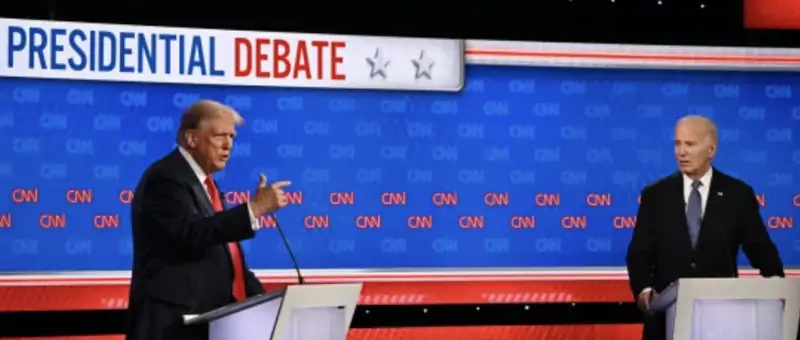Addressing the Opioid Crisis: Insights from the Latest Presidential Debate
Addressing the Opioid Crisis: Insights from the Latest Presidential Debate
During the last United States presidential election debate on June 27, 2024, the candidates were asked about their plans to address the opioid crisis. CNN’s Dana Bash posed the question, highlighting the devastating impact of the epidemic on American families and communities. She asked, “What concrete steps will you take to end the opioid crisis that continues to ravage our nation?” 
The Impact of the Opioid Crisis in the United States
The opioid crisis in the United States has reached catastrophic levels, destroying lives and communities across the nation. According to the National Institute on Drug Abuse, nearly 75% of drug overdose deaths in 2020 involved an opioid. This epidemic has been fueled by a combination of over-prescription of painkillers, the availability of cheap heroin, and the influx of synthetic opioids like fentanyl (Wikipedia). Families are torn apart as addiction takes hold, leading to job loss, child neglect, and increased crime rates.
Traditional Treatments: Methadone and Buprenorphine
In the fight against opioid addiction, many doctors and rehabilitation clinics in the U.S. rely on medications like methadone and buprenorphine. These medications are part of a treatment approach known as Medication-Assisted Treatment (MAT), which combines the use of medications with counseling and behavioral therapies. Methadone and buprenorphine work by binding to the same receptors in the brain as opioids, reducing cravings and withdrawal symptoms without producing the same high.
However, while MAT is effective in reducing illicit opioid use and overdose deaths, it is often criticized for merely substituting one addiction for another. Patients remain dependent on these medications for long periods, sometimes indefinitely, which raises concerns about the sustainability and true effectiveness of this treatment approach.
Ibogaine: A Potential Game-Changer
Casa Santa Isabel, a rehabilitation clinic in Mexico, offers an alternative treatment using ibogaine, a psychoactive substance derived from the root bark of the African iboga plant. Ibogaine is known for its ability to interrupt addiction by resetting the brain’s chemistry and reducing withdrawal symptoms. Unlike methadone and buprenorphine, ibogaine is not addictive and is used in a single or limited number of treatments.
Studies and anecdotal evidence suggest that ibogaine can significantly reduce or eliminate opioid withdrawal symptoms and cravings, allowing individuals to break free from addiction more effectively than traditional methods. Casa Santa Isabel has reported high success rates, with many patients achieving long-term sobriety after undergoing ibogaine treatment at their facility.
The Bottom Line
The opioid crisis remains one of the most pressing public health challenges in the United States. While traditional treatments like methadone and buprenorphine offer some relief, they do not address the root cause of addiction. Innovative treatments like ibogaine present promising alternatives, but more research and regulatory approval are needed before they can become mainstream solutions.
FAQ
1. What are the main causes of the opioid crisis in the United States? The opioid crisis has been driven by the over-prescription of painkillers, the availability of cheap heroin, and the influx of synthetic opioids like fentanyl.
2. How do methadone and buprenorphine work? Methadone and buprenorphine reduce cravings and withdrawal symptoms by binding to the same receptors in the brain as opioids, without producing the same high.
3. What is Medication-Assisted Treatment (MAT)? MAT combines the use of medications like methadone and buprenorphine with counseling and behavioral therapies to treat opioid addiction.
4. What are the criticisms of MAT? Critics argue that MAT substitutes one addiction for another, as patients remain dependent on these medications for long periods.
5. What is ibogaine? Ibogaine is a psychoactive substance derived from the iboga plant, used to interrupt addiction by resetting the brain’s chemistry and reducing withdrawal symptoms.
6. How does ibogaine treatment differ from MAT? Ibogaine is used in a single or limited number of treatments, whereas MAT often involves long-term medication use. Ibogaine is not addictive, unlike methadone and buprenorphine.
7. What are the risks of ibogaine treatment? Ibogaine can cause serious side effects, including heart complications, and should only be administered under strict medical supervision. At Casa Santa Isabel, risks are mitigated and all treatments are medically supervised by physicians and medical professionals. Casa Santa Isabel is the only licensed clinic in Mexico offering ibogaine treatments.
8. Is ibogaine treatment available in the United States? Ibogaine is not currently approved for use in the United States and is primarily available in clinics in countries like Mexico.
Contact us today.
